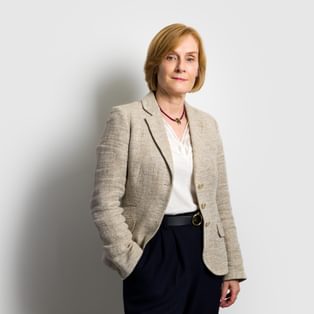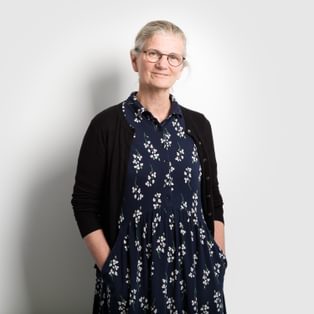As part of Paris Arbitration Week 2025, we hosted a panel discussion in collaboration with the LCIA EDI Steering Group and TransPerfect Legal. Our panel discussed the LCIA’s recently launched Equity, Diversity, and Inclusion (EDI) Guidelines. The session, titled The Next Phase of Inclusion: Actionable Insights from the LCIA EDI Guidelines, brought together a panel of legal professionals committed to embedding inclusive practice into every stage of the arbitral process.
Hosted and moderated by Thomas Karalis, Partner at Fladgate LLP, the panel featured Tope Adeyemi (Barrister and Arbitrator at 33 Bedford Row); Kate Corby (Partner at Baker McKenzie); Kevin Nash (Director General of the London Court of International Arbitration (LCIA)); and Al-Karim Makhani (Vice President at TransPerfect Legal).
The discussion offered a comprehensive look at how the EDI Guidelines can be implemented in arbitral practice, where technology can drive accessibility, and why diverse teams deliver stronger outcomes.
Here are five actionable insights from their discussion:
Embedding Inclusion in Arbitral Practice
Opening the session, Thomas reminded attendees that inclusion is not aspirational, it is foundational to legitimacy. International arbitration serves a global community. To be truly effective, it must reflect the diversity of its participants.
The LCIA’s EDI Guidelines, launched in December 2024, are the first institution-led framework to take a holistic and practical approach to inclusion in international arbitration. As Thomas noted, these guidelines are not abstract ideals: "They address every phase of the arbitral process and every stakeholder involved."
Tope emphasised the practical value of the guidelines: "These EDI guidelines bring together the fundamentals of best practice... The fact that it’s coming from the LCIA — a bold leader — gives it weight." She explained how institutional support allows individuals pushing for reform to ground their efforts in a credible and structured framework.
Importantly, Tope referenced her own experience with training: "Over the years, I’ve done a number of subconscious bias courses... But it’s an ongoing thing. You don’t do a course in 2012 and that’s the end of it." Her comments highlighted the importance of continuous learning in fostering cultural competence and fairness.
Technology as a Driver of Inclusion
Al-Karim introduced a live demonstration of TransPerfect’s GlobalLink Live Cast tool, which provides AI-powered real-time transcription and bilingual interpretation. "Technology has a big part to play in aiding accessibility for international arbitration. It accommodates individuals who may be geographically, financially, or physically barred from previously being part of the process," he explained.
Al-Karim noted that "Technology is not mentioned in the guidelines at all, despite its potential to advance many of the guidelines' aims." He highlighted tools that support inclusive practice, such as Definely, which simplifies contractual drafting and makes legal documents more accessible to those with visual impairment, as well as the potential benefits of engaging e-learning modules to promote awareness and practical adoption of the guidelines.
Diverse Teams Make Better Decisions
Kate provided a practitioner's insight into how diversity improves outcomes. "The performance of a team and decision-making quality is increased when you have diversity of thought, diversity of experience, and diversity of background — but also inclusive behaviour," she said.
She shared her approach to building effective arbitration teams: deliberately varying team composition, identifying diverse arbitrators and experts, and mentoring professionals from underrepresented backgrounds. "Having these thoughts set out in a practical, not overly detailed document is really important... The guidelines provide readily explainable, practical tips."
Arbitrator Conduct and Cultural Competency
Bias and cultural awareness emerged as critical themes. Tope reflected: "People put too much emphasis on demeanour — for example eye contact, gesticulation – that can lead to unfair assessments." She advocated ongoing training and self-awareness as tools to mitigate these issues.
The guidelines, she noted, serve as a reminder that arbitrators must actively incorporate inclusive behaviour: "You need to be conscious of how you're behaving and responding to people so that you can be fair in your deliberations."
The discussion highlighted that the guidelines are intentionally broad and inclusive. They cover a wide spectrum of diversity characteristics — from gender, ethnicity, and geography to less visible characteristics such as disability, neurodiversity, sexual orientation, and socio-economic background. As Kate noted, the goal is not to impose a hierarchy of diversities, but rather to foster a culture where all types of diversity are respected and supported.
Institutional Leadership and Data
Kevin explained the LCIA’s vision: "To get where we want to go with EDI, appointments and assignments should reflect our user base... It should look like a very diverse user base." With the LCIA’s hearings to date, including parties from over 160 jurisdictions, the LCIA sees inclusion as essential to legitimacy.
He acknowledged challenges around measuring the impact of inclusion but suggested that data and AI could support more equitable arbitrator selection. "Incorporating AI so that the initial list is generated based on certain factors, with diversity being one of them... That’s a very good thing to do."
Al-Karim echoed this sentiment, pointing out that the technology to support such processes already exists. What’s missing, he said, is "awareness and a shift in perspective to view technology as an EDI enabler."
Conclusion: How can I take action?
The session closed with a consensus: the EDI Guidelines are only a beginning. As Al-Karim stated, "Much of the technology needed to support the guidelines already exists — but awareness and adoption lack."
The guidelines provide a framework, but progress depends on implementation. Institutions, counsel, and service providers alike must embed inclusion at every stage. Thomas concluded, "We all have a role to play... To make our practices more inclusive and more effective."
In practical terms, anyone working on arbitration proceedings could ask themselves: "On my next case, can I propose that these guidelines are followed — whether the case is held before the LCIA, ICC, or any other forum?”
Leaders in arbitration can go further by encouraging colleagues and junior team members to actively live the principles of the guidelines when selecting arbitrators and experts, structuring hearings, or assembling teams. Embedding these values consistently is what will drive meaningful and lasting change in the international arbitration community.































































